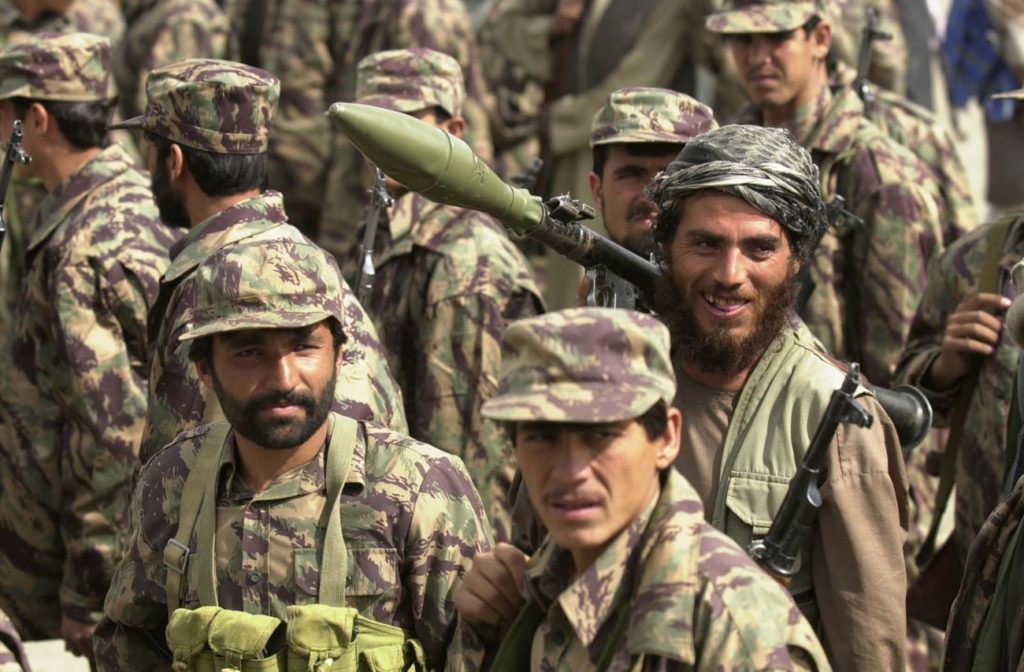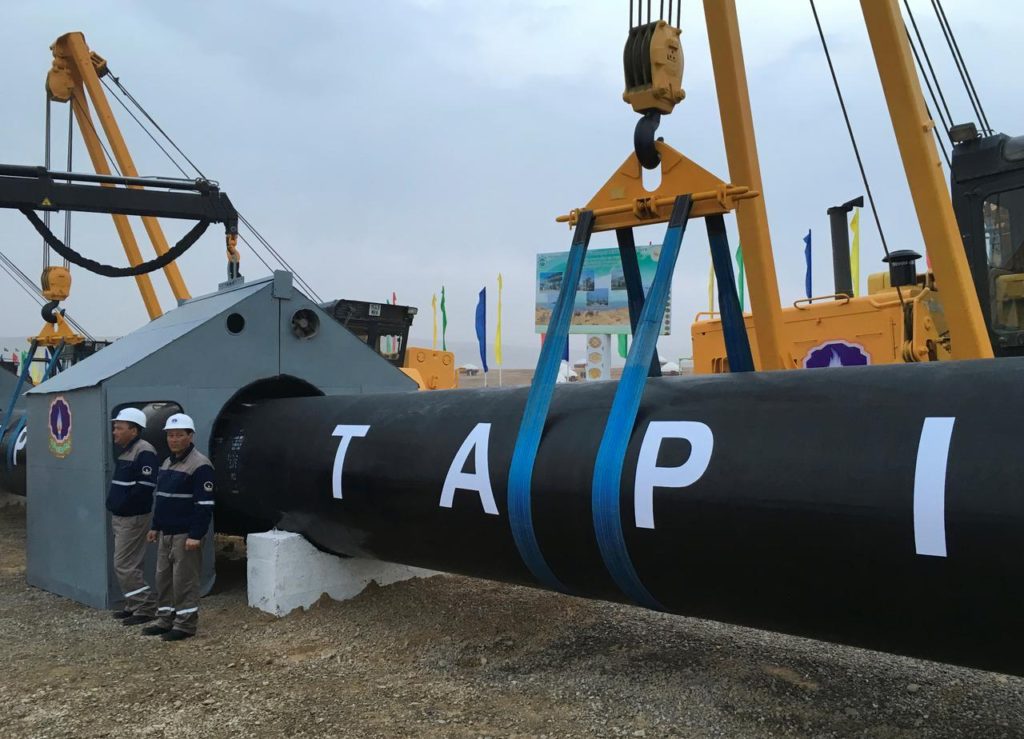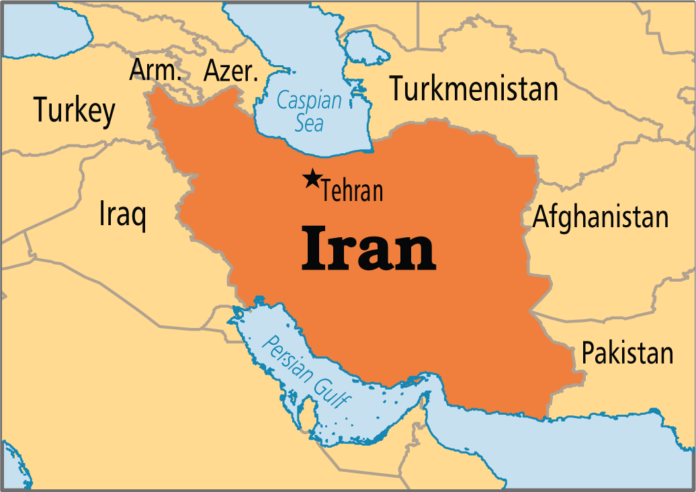Iran is the southwestern neighbor of Pakistan and an Islamic country that has deep cultural, historic and religious roots with Pakistan. This is a fairly large country, about 1.5 times the size of Pakistan with a population of 83 million. Iran is an oil rich country having borders with Iraq, Turkey, Afghanistan, Pakistan, some of the Central Asian states, Caspian Sea and Persian Gulf. Strategically, Iran has the long coastal line in Persian Gulf hence it is closer to all Arabian Gulf GCC states and a considerable part of maritime domain exits in Gulf of Oman and Arabian Sea.
One more interesting fact is that Iran is closely linked with the Central Asian States and Russia through the Caspian Sea that is a natural pivotal point between Iran, the Caucasus region, Russia and the Central Asian States. This pivotal Caspian Sea has great potential to explore within ECO block countries and having it linked further with CPEC, hence huge economic and strategic activities can be planned within above said pivotal countries.
It is critical for Pakistan to understand its geographical location and its border situation with neighboring countries. The total border length with all its neighbors is approximately 6774 km. The border with traditional rival India is 3652 km long in the east including areas of Line of Control (LOC) which has heavy military presence, 2252 km long border with Afghanistan through the Durand Line which Afghanistan does not recognize, 585 km border with traditional ally China and 909 km long border with Iran. Relations between Pakistan and Iran were pleasant during the Shah’s time but have definitely undergone some ups and downs after that period.
After the independence of Pakistan on 14th August 1947, Iran had the unique distinction of being the first country to internationally recognize the sovereign status of Pakistan, thereafter the two continued cooperating with each other economically. This cooperation lasted throughout the Cold War with Iran supporting Pakistan in its conflicts with arch-rival, India and In return, Pakistan supporting Iran militarily during the Iran–Iraq War in the 1980s. Since 2000, relations between the two states relatively normalized and economical and military collaboration strengthened the relationship. Both countries are founding members of the Economic Cooperation Organization (ECO) and RCD, the Regional Cooperation for Development.
Pakistan’s relations with Iran have been strained at times due to sectarian tensions but nevertheless, economic and trade relations continued to expand in both absolute and relative terms, leading to the signing of a Free Trade Agreement between the two countries in 1999. At present, both countries are cooperating and forming alliances in a number of areas of mutual interest, such as fighting the drug trade along their common border and combating the Balochistan insurgency along their border. Iran has also expressed an interest in joining the China-Pakistan Economic Corridor (CPEC).
The Iranian role became critical after the 1979 Islamic revolution. The western world had good economic and military relations with Iran at the time of the Shah and provided her with every help to strengthen Shah’s regime. Islamic revolution in Iran and the Shah’s exile was a set back for the United States, Europe and especially Israel who managed to get superior strategic status in the Middle East after capturing Arab lands and Golan Heights as the result of first Arab-Israeli war. Iran’s role also became critical after the US invasion of Iraq in 2003. Iran with its future nuclear capability may become a challenge for the allied forces and Israel. Iran has vast land consisting of hard terrain and mountainous regions and due to its physical and strategic importance, Iran will continue to be a key player in regional politics. It can be concluded having seeing situation in Afghanistan that an economically stable and militarily strong Iran is important for the defence of Pakistan due to the reasoning of being a next border neighbor. Pakistan cannot afford to have most of its borders either hostile or unstable.

Diplomacy Challenges
In the region, Iran has played and continues to be playing her cards very carefully. For instance, Iran successfully managed the situation with the Taliban after 911 by supporting the Northern Alliance’s invasion of Kabul and also during the US Iraq war in 2003 supporting anti-Saddam alliance keeping in mind that both the Taliban and Saddam Hussein were considered rivals to Iran. In this way, Iran basically got rid of her two major opponents by employing a clever diplomatic and tactical move. Iran has been involved in Lebanon’s affairs predominantly and has huge influence in that country’s socio political system. Furthermore; Iran has initiated the war in Yemen by supporting local sectarian group thus it is trying to get control of leveraging country’s lawlessness situation. On the top of that, Iran openly supports the Syrian regime alongwith Russian counterparts and has played a key role preventing Asad regime from falling.
Considering the above scenario, it looks as if Iran’s diplomacy and tactics in the region is revolving around leveraging and maneuvering sectarian politics, struggle to regain Iranian historic hegemony and economic bargaining utilizing its huge oil reserves. Iran basically used all its diplomatic prowess and tactics to achieve these goals, for instance, it managed to sell oil to Japan, China, India and other European countries even when under UN sanctions via non cash transactions and other bilateral commodities exchange, etc.
Pakistan must maintain a balance between the Arabian states and Iran with smart maneuvering, depending upon ground situation. Iran has to understand that Pakistan’s tilt will always be towards the Arabs due to the holy places of Makkah & Madinah, historic strategic ties and its huge expatriate population. But Pakistan must be careful not to be a party in any Arab-Iran conflict rather it must try to close the gap between these two Muslim countries.
It is extremely difficult for Pakistan to be involved in direct conflicts like Yemen and the Syrian war considering possible sectarian challenges within Pakistan. For the sake of argument, let us take a couple of examples – Turkey is a predominant Muslim nation yet it is a member of NATO and a key ally of the US but still maintains relations with Russia. In the same way, Turkey has historic differences with European countries yet still it is a candidate for European Union membership.
Another example is India which maintains balance between Arabs and Iran due to its economic offerings like cheap skilled labor and employing impartial policy being a non-Muslim country for both Arabs and Iran, and this policy seems to be working.
The question is, when it comes to relations with Pakistan, why expectations from both Arab and Iranian sides are to think either from a Shiite or Sunni perspective. The challenge for Pakistan is to continue keeping the thin line of strategic balance between both sides, this can be exercised through economic potential by leveraging geographical location for trade, courageous leadership who could maintain Pakistan’s stance to both sides and exhibiting military strength through exercises and ammunition, equipment sales, etc.
Pakistan-Iran Economic Potential
Trade between Pakistan and Iran peaked at US$1.32 billion in 2008-2009 but subsequently declined and is presently around just US $265 million. The elected governments in both countries want to boost trade which remained low due to international sanctions on Iran. However, several other countries like China, Russia and India were able to resist these sanctions and maintained trade relations with Iran, Pakistan should do the same and maintain trade relations with Iran. The trade volume between the two countries remained low despite signing of a Preferential Trade Agreement on March 4, 2004, which became operational in September 1, 2006. Nevertheless, it is understood that the two countries have a much higher trade volume through informal channels i.e. smuggling and through third country transactions. Pakistan has identified five places for setting up trading centers along the Pak-Iran border i.e. Taftan-Minjaveh, Ladgashtjalaq, Parome-Kuhak, Mand-Peshin and Santsar-Nobandan. The purpose of these common border markets is to sell goods at a concessional rate of customs duty and other taxes in order to control the growing cross border illegal trade.

Iran Pakistan Gas pipeline
The Iran Pakistan Gas Pipeline project or IP Gas Pipeline Project is under construction, this is a 2,775-kilometre pipeline to deliver natural gas from Iran to Pakistan and it must be completed at any cost. This is a key and critical project for establishing strategic relations and enhancing economic cooperation between the two countries. It would ensure the supply of 750 million cubic feet of natural gas per day to Pakistan which is required to keep its industrial and commercial wheels in perpetual motion. Even though Iran has to be dealt carefully due to UN sanctions, Pakistan has to manage one way or another for execution of this project.
It is expected that gas delivered from Iran through the pipeline will cost US$11 per million British thermal unit (MMBTU) compared to $13 per MMBTU which is expected to be price of gas delivered through the proposed Trans-Afghanistan Pipeline and $18 per MMBTU of imported LNG. The pipeline’s section in Iran was built by the National Iranian Gas Company. It used Khatam al-Anbia as a sub-contractor. In Pakistan, a consortium of Sui Northern Gas Pipeline Limited and Sui Southern Gas Company Limited is responsible for the construction of the pipeline.
The contract for engineering, procurement, construction and financing of the Pakistan’s section was signed with Iran’s Tadbir Energy. Iran agreed to provide a $500 million loan payable in 20 years. However, on 13-December 2013, Pakistan’s Minister for Petroleum and Natural Resources Shahid Khaqan Abbasi said that Iran is unable to fund the project citing ‘acute financial constraint’ as the reason. Pakistan authorities however are said to remain committed with the project. Both sides have decided to constitute a working group which would re-establish the new parameters for the project, including a new time-frame and other important issues involving financing of pipeline to be laid down in the territory of Pakistan.
Upgrading RCD highway & Eurasian Connectivity
The RCD Highway formally known as Highway N-25 already exists between Pakistan Iran and Turkey and it connects Balochistan with other provinces and cities in Pakistan and further with Iran and Turkey. It is a 813 km long highway, passing through Karachi, Bela, Khuzdar, Kalat, Quetta and Chaman and then continuing into Afghanistan, It then joins N-40 (National Highway 40 Quetta-Taftan International Border Circuit) which leads it via Naukundi to Road 84 in Iran and through various Iranian Highways to Turkey and onwards into Europe. The highway also has a recent connection to Gwadar and passes through many towns in Balochistan. Efforts must be made to make it a viable project linking Pakistan, Iran, Turkey, and Azerbaijan into the Caucasus and further in to Central Asia and Eurasia for connectivity reasons. This way, all these countries that are already under the ECO umbrella will come even closer and huge potential can be explored via re-investment on this RCD Highway and can be Turkey Iran Pakistan economic corridor or TIPEC having unique connections with many seas, Persian Arabian gulf/ Arabian Sea, pivotal Caspian & Black Sea. This is food of thought for these countries’ policy makers. This possible corridor (TIPEC) having connection with CPEC is a powerful economic and strategic maneuver between these countries.
Key areas to address the diplomacy with Iran in effective manner are:
1- Consult Pakistan Parliament while dealing with Iranian matters and arrange inter-parliamentary delegations visits between Tehran and Islamabad.
2- Appoint/ validate Foreign Office desk that must monitor Iran Arab strategic balance situation and advise the Government accordingly.
3- Establish Pakistan banks and branches (even via third party ventures due to UN sanctions) in Iran to enhance business and use the Pakistani Rupee as currency in areas bordering Pakistan, same like in Afghanistan.
4- Visit visas and student visas to Iranian tourists and students should be increased for people to people contact.
5- Recognize Iranian intellectuals and form joint intellectual groups to promote inter-country dialogue.
6- Iran must give up hard core extremism agenda, if any, that she is trying to spread in the region but rather it must be flexible for more harmony in the region for economic development. It will be in the greater interest of Iran to establish good relations with its neighbors and it should give up its historic hegemony mindset. The solid and visible economic interests must play a role convincing Iranian leaders to rethink their extremist ideology and this can be a win-win situation for the entire region. Pakistan foreign office must elaborate this point with Iranian counterparts in a precise manner.
7- Most importantly, Pakistan Must Engage Iran in CPEC and make utmost effort to connect Chahbahar with CPEC road links hence providing easy access to Iran for trade with China. If this materializes, this is the best option for Iran and Pakistan to further strengthen economic ties. Since Russia and China are close allies now and Iran has close ties with Russia, it is being realized that Pakistan-Iran-China paradigm through SCO and ECO is the need of the time for regional economic development. Iranians are business mindset people, so the best way to engage them is via solid economic pacts like SCO/ECO/RCD and inter-governmental/ bilateral treaties.




